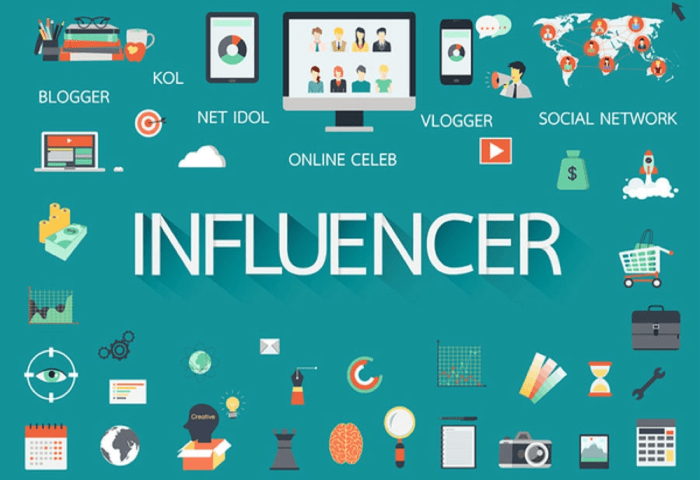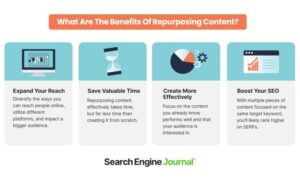Using Influencers to Reach New Audiences sets the stage for a dynamic exploration of leveraging influencer marketing to connect with untapped demographics, creating a buzz that resonates with Gen Z and millennial consumers alike.
As brands navigate the ever-evolving landscape of digital marketing, the role of influencers in driving brand awareness and engagement has become increasingly pivotal.
Understanding Influencer Marketing: Using Influencers To Reach New Audiences
Influencer marketing is a strategy where brands collaborate with individuals who have a large following on social media platforms to promote their products or services. This form of marketing is significant in reaching new audiences because influencers have built a loyal and engaged fan base that trusts their recommendations.
Influencer marketing differs from traditional forms of advertising in that it relies on the credibility and authenticity of the influencer to connect with their followers. Instead of directly promoting products, influencers create content that seamlessly integrates the brand into their everyday lives, making it more relatable to their audience.
Successful Influencer Marketing Campaigns
- One successful example of influencer marketing is the partnership between fashion brand Revolve and various fashion influencers. By collaborating with influencers to showcase their clothing, Revolve was able to reach a younger demographic and increase brand awareness.
- The #ShareACoke campaign by Coca-Cola is another example of a successful influencer marketing campaign. By personalizing Coca-Cola bottles with popular names and encouraging influencers to share them on social media, the brand was able to create a buzz and reach new audiences.
- The collaboration between fitness influencer Kayla Itsines and sports brand Adidas resulted in a successful influencer marketing campaign. By promoting Adidas activewear through her fitness routines and sharing her favorite products, Kayla Itsines helped Adidas connect with health-conscious consumers.
Identifying the Right Influencers

When it comes to selecting influencers to reach specific target audiences, there are several key criteria to consider. It’s essential to look at factors such as the influencer’s niche, audience demographics, engagement rates, and overall brand alignment. By choosing influencers that resonate with your target audience, you can increase the effectiveness of your marketing campaigns.
Importance of Aligning Influencer Values with Brand Values, Using Influencers to Reach New Audiences
It’s crucial to ensure that the values of the influencers you partner with align with your brand’s values. When influencers authentically believe in your brand and its message, their audience is more likely to trust their recommendations. This alignment leads to higher engagement rates and a more impactful reach to new audiences.
Tools and Strategies for Identifying the Right Influencers
- Utilize influencer marketing platforms: Platforms like Upfluence, AspireIQ, and Traackr can help you identify influencers based on specific criteria such as audience size, engagement rates, and niche.
- Engage in social listening: Monitor conversations on social media platforms to identify influencers who are already talking about your brand or industry.
- Collaborate with influencer agencies: Work with agencies that specialize in influencer marketing to access their network of influencers and expertise in selecting the right partners.
- Consider micro-influencers: While macro-influencers have a larger reach, micro-influencers often have higher engagement rates and can be more cost-effective for reaching niche audiences.
Building Relationships with Influencers
Establishing strong relationships with influencers is crucial for successful collaborations in the world of marketing. By nurturing these connections, brands can tap into the influencer’s audience and credibility, expanding their reach and engagement. Here are some tips on how to build and maintain these relationships effectively:
Benefits of Long-Term Partnerships
- Consistent Brand Messaging: Long-term partnerships allow influencers to become more familiar with the brand’s values and messaging, ensuring a consistent and authentic representation to their audience.
- Increased Trust and Credibility: Over time, influencers can build trust with their followers, making their recommendations more impactful and credible, leading to higher conversion rates for the brand.
- Deeper Audience Insights: Long-term collaborations provide opportunities for influencers to gather deeper insights into their audience’s preferences and behaviors, allowing brands to tailor their marketing strategies more effectively.
Successful Examples of Brands Building Lasting Relationships
- Nike and Serena Williams: Nike has established a long-term partnership with tennis superstar Serena Williams, leveraging her influence to promote their athletic apparel and inspire women in sports.
- Dior and Bella Hadid: Luxury brand Dior has maintained a strong relationship with model Bella Hadid, collaborating on various fashion campaigns and events to reach a younger and fashion-forward audience.
- Red Bull and Extreme Sports Athletes: Red Bull has built lasting relationships with a variety of extreme sports athletes, sponsoring events and creating content that resonates with their target audience of adrenaline-seeking individuals.
Crafting Compelling Content with Influencers

Crafting compelling content with influencers is essential to capturing the attention of new audiences and driving engagement. By collaborating with influencers, brands can leverage their creativity and authenticity to create content that resonates with their followers. This not only helps in reaching new audiences but also in building a strong brand image.
Importance of Authenticity and Creativity
Authenticity and creativity are key elements in influencer-generated content that can make a significant impact on audience engagement. Audiences today are savvy and can easily spot inauthentic or forced content. When influencers create content that is true to their style and voice, it helps in establishing a genuine connection with their followers. Additionally, creativity in content helps in capturing the audience’s attention and making the brand stand out in a crowded digital space.
- Authenticity builds trust: Authentic content resonates with audiences on a deeper level and helps in building trust between the influencer, brand, and audience.
- Creativity drives engagement: Creative content is more likely to grab the audience’s attention and keep them engaged, leading to higher levels of interaction and brand recall.
- Stand out from the crowd: In a competitive landscape, creative content helps the brand differentiate itself and leave a lasting impression on the audience.
Best Practices for Integration
Integrating influencer content seamlessly into brand messaging is crucial for effectively reaching new audiences. It is important to maintain a balance between the influencer’s style and voice while aligning the content with the brand’s values and messaging.
- Align content with brand values: Ensure that the influencer’s content reflects the brand’s values and resonates with the target audience.
- Collaborate on content creation: Work closely with influencers to co-create content that seamlessly integrates the brand message while leveraging the influencer’s creativity.
- Track performance metrics: Monitor the performance of influencer-generated content to understand what resonates with the audience and optimize future collaborations.





